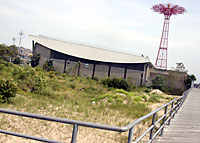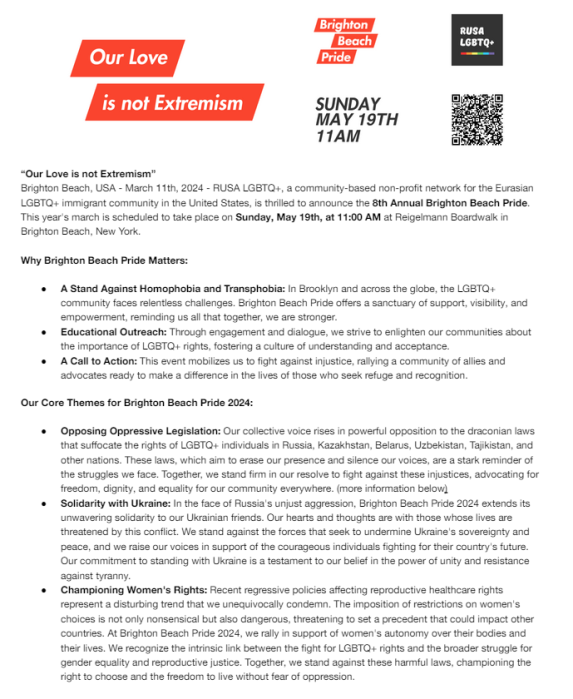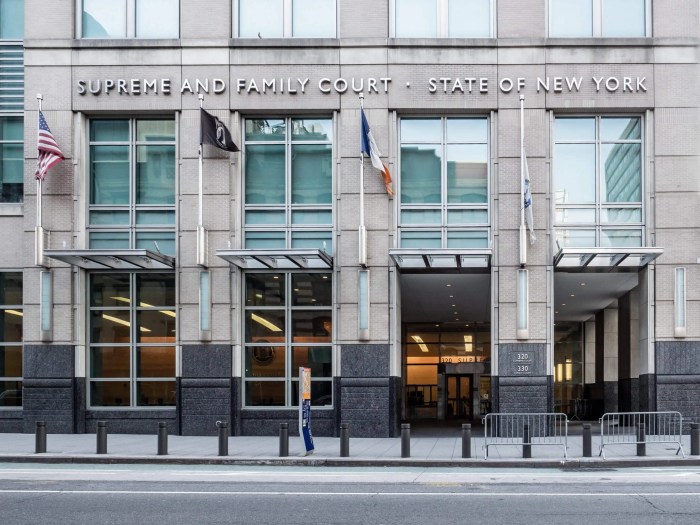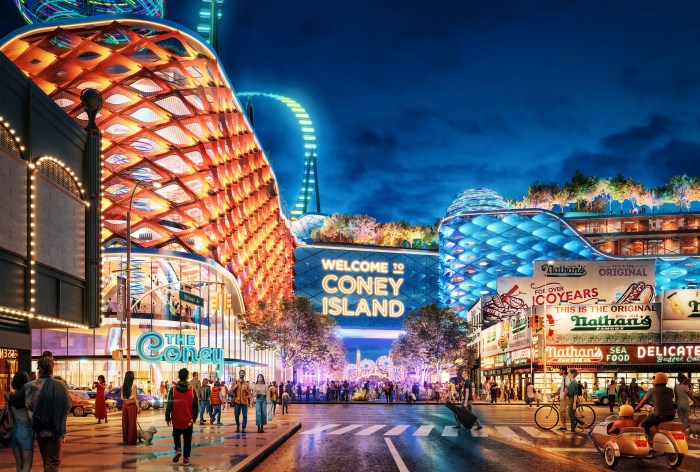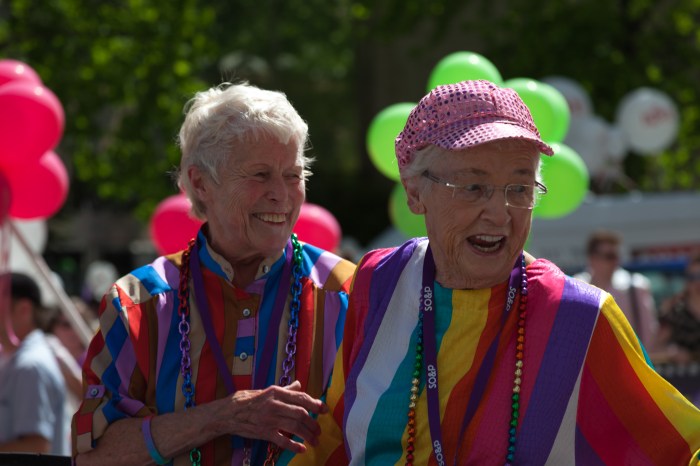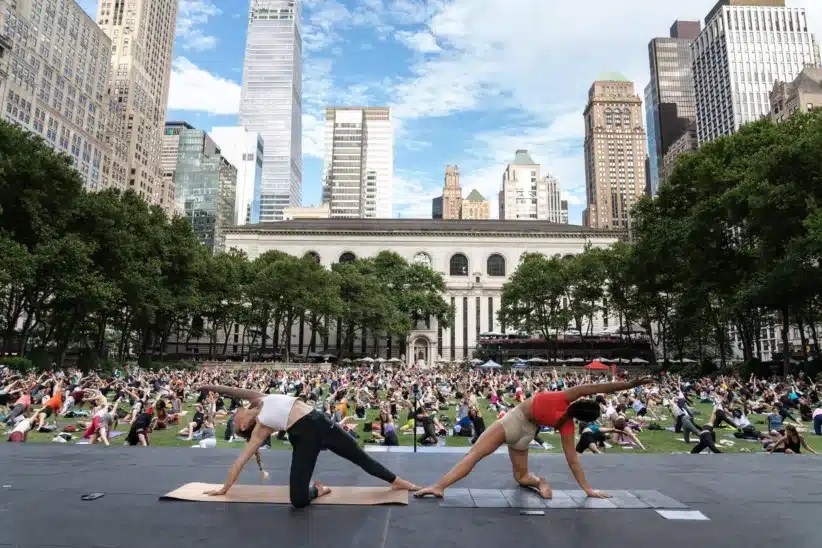A developer and realty company are marketing a large, vacant lot along
Coney Island’s boardwalk for what would be the former seaside amusement
mecca’s first luxury condominium development.
The rectangular, 168,000-square-foot lot runs from Surf Avenue to the
boardwalk, between West 20th and West 21st streets.
Thor Equities, which owns the lot and plans to build a large-scale amusement
and retail mall on property it owns further east along the boardwalk,
has listed the property with Massey Knakal Realty Services.
The asking price — $85 million.
And while the city-block-sized property is currently zoned as part of
the entertainment and amusement district, it holds the promise of rezoning
to large-scale residential development under the city’s plan to redevelop
the formerly bustling seaside resort area, says the broker.
Thor Equities principal owner Joseph Sitt, known largely for his development
of shopping malls, bought the property in March. It sits between the former
Child’s restaurant, a city landmark that also awaits development,
and the Abe Stark Arena, a city ice-skating rink that abuts the Keyspan
Park parking lot.
The advertisement put out by Massey Knakal on Wednesday boasts that the
property has the potential for at least a 672,000-square-foot build-out.
The listing calls the potential residential development “Ocean Towers”
and shows by way of example a rendering of Muss Development’s recently
completed Oceana Condominiums in Brighton Beach, where apartments in the
“gated community” development run from $500,000 to $2 million,
according to the developer’s Web site.
Lee Silberstein, Thor’s spokesman, said he was under the impression
Sitt was looking for a development partner in the West 21st Street property,
though he hadn’t addressed the matter yet with the developer.
“I thought he was looking for a joint venture partner, he has several
properties in Coney Island and he’s been getting offers for all of
them, but he is determined to do the amusement-entertainment-retail project,”
said Silberstein.
“This site was not that, this was on the other side of Keyspan Park.
But his main properties are on the eastern side [of the boardwalk] and
that’s where he’s been devoting most of his resources and continues
to devote his resources,” Silberstein said.
But this week, even those in the know were left to speculate what Sitt
has up his sleeve.
“This is the biggest listing that we have now in Coney Island,”
said Michael Harari, the from Massey Knakal broker who is handling the
sale.
“In my opinion, the reason it hasn’t been developed is because
it’s zoned strictly as amusement, and amusement isn’t the business
it used to be in Coney Island,” he said. “It’s not as popular
and in-demand.”
Harari said the Coney Island Development Corporation (CIDC), the public
authority set up to lead the neighborhood’s redevelopment, was leaning
toward making that development site residential. The zoning he advertised
as likely, R7-1, would allow it to be “rezoned to allow for mid-rise
condominium development,” maybe with an anchor tenant in retail or
commercial uses in the lower floors.
Dick Zigun, a neighborhood preservationist who is director of Coney Island
USA, a non-profit organization based in the amusement district, said he
thought that no matter what, some component of the C7 zoning would be
preserved there.
“They [the CIDC] haven’t released their report yet,” he
said, “but they are likely for that area to propose residential above,
and have the ground-floor and second-floor consistent with C7,” Zigun
said.
Namely, he said, a 500- to 600-unit luxury condominium complex, right
upstairs from what Zigun sees as a bowling alley, video arcade, movie
theater or night club — or some combination of those businesses.
“The idea of the CIDC recommendations is that it would take the periphery
of the amusement park, which has been abandoned for decades, with the
additional commercial development — so it would encourage bars and
clubs and bowling alleys,” Zigun said.
“Everyone in Coney Island, from the biggest operator to the littlest
operator, wants a bigger and better Coney Island. We want to see the empty
lots disappear,” he said.
But while Harari sees commercial as being an essential component, he did
not think amusements would be a fit the city would encourage for such
a development.
“I don’t think the city would rezone it to allow for something
noisy with the residential — I don’t think it fits,” Harari
said. “I think they want it to be something more high-end, maybe
a little quieter, like a cafe or restaurant, maybe some mainstream retail,
some clothing stores or boutique stores. But I don’t think a night
club or bowling alley is something that would fit underneath a high-end
residential development.
“I guess we’ll just have to wait and see what the city decides
to do,” said the broker, who added that C7 zoning on the lower floors
could go far in the way of attracting potential commercial anchor tenants.
“Oddly enough, people have a misconception that C7 has to be a roller
coaster or a bowling alley or an arcade,” said Harari. “C7 can
actually be a pharmacy or a boutique; if you look through [the zoning
guidelines] you’ll see … you could put a McDonald’s, a
Red Lobster, a cigar shop there. You could even put a high-end theater.”
The Department of City Planning could not confirm by press time whether
Harari’s characterization of the zoning was accurate.
Zigun said that either way, the potential development would cause some
friction.
“ The good is, it would finally develop empty land and expand the
C7 activity. The bad is that the C7 zone is what New York City created
for things that are loud and late-night. And putting more people next
to what is loud sets up a potential conflict,” Zigun said, mentioning
the Luna Park public housing development that was built off Surf Avenue
in the Robert Moses era.
“Hopefully their apartments will be soundproof,” he quipped.


